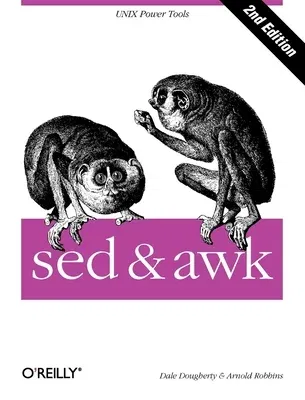The book begins with an overview and a tutorial that demonstrate a
progression in functionality from grep to sed to awk. sed and awk share
a similar command-line syntax, accepting user instructions in the form
of a script. Because all three programs use UNIX regular expressions, an
entire chapter is devoted to understanding UNIX regular expression
syntax. Next, the book describes how to write sed scripts. After getting
started by writing a few simple scripts, you'll learn other basic
commands that parallel manual editing actions, as well as advanced
commands that introduce simple programming constructs. Among the
advanced commands are those that manipulate the hold space, a set-aside
temporary buffer. The second part of the book has been extensively
revised to include POSIX awk as well as coverage of three freely
available and three commercial versions of awk. The book introduces the
primary features of the awk language and how to write simple scripts.
You'll also learn: common programming constructs; how to use awk's
built-in functions; how to write user-defined functions; debugging
techniques for awk programs; how to develop an application that
processes an index, demonstrating much of the power of awk; and FTP and
contact information for obtaining various versions of awk. Also included
is a miscellany of user-contributed scripts that demonstrate a wide
range of sed and awk scripting styles and techniques.

